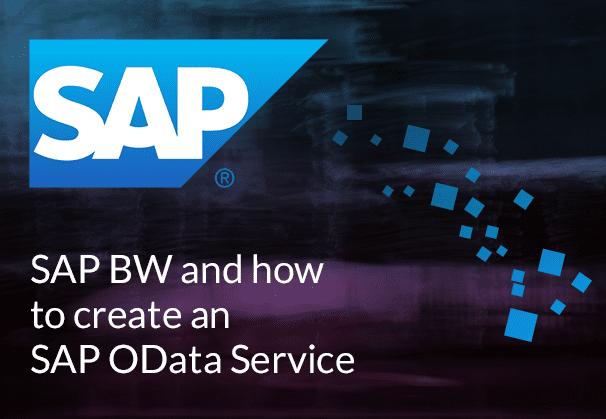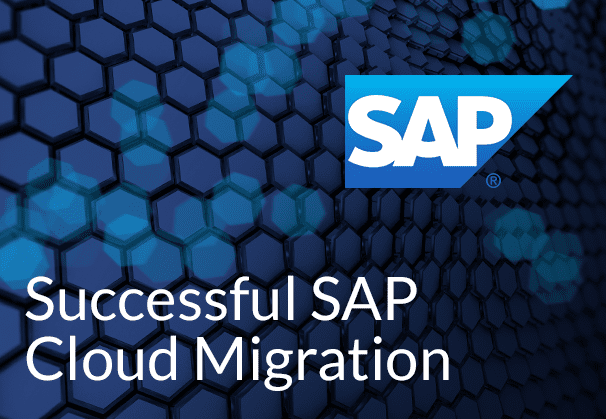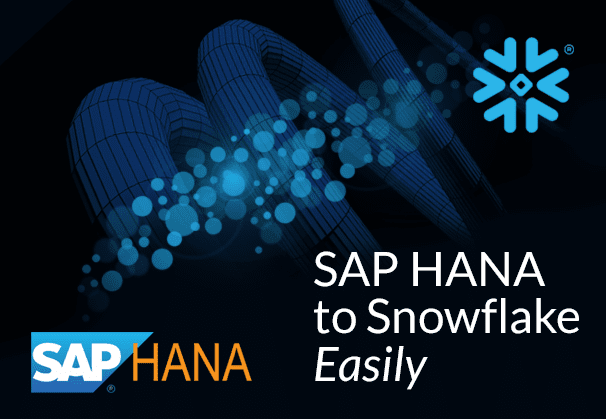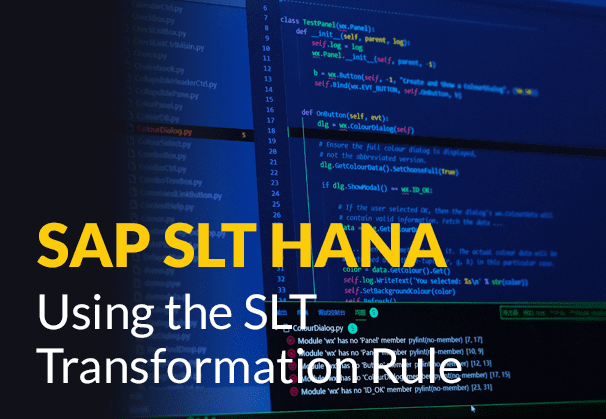- SAP BW or SAP Business Warehouse – what is it?
- SAP BW Overview: SAP Data Warehousing and Analytics
- SAP Integration Challenges
- Factors that hinder SAP Data Extraction
- SAP Extractors to the rescue! But what is an SAP extractor anyway?
- SAP BW Data Transfer and SAP Extractor Enhancement
- Types of SAP Extractors
- How to activate a Data Source and enable an SAP Extractor for SAP ODP
- What is SAP ODP?
- Accessing SAP Extractors from outside SAP
- What is SAP OData?
- What is SAP OData Service?
- What is SAP Gateway?
- Steps to create the SAP OData Service
- The SAP ETL tool that extracts SAP data at Application level in real-time, with Business Logic intact
SAP BW or SAP Business Warehouse – what is it?
SAP Business Warehouse (SAP BW) is also called SAP NetWeaver Business Intelligence (SAP BI). It is Enterprise Data Warehousing (EDW) solution of SAP that also handles Business Intelligence, Analytics, and Reporting. SAP BW / BI as it is also known represents the SAP Business Warehouse Business Intelligence software platform. SAP ETL Tool to extract SAP data from SAP source systems
Please Note: SAP OSS Note 3255746 has notified SAP customers that use of SAP RFCs for extraction of ABAP data from sources external to SAP (On premise and Cloud) is banned for customers and third-party tools. Learn More
SAP BW Overview: Data Warehousing and Data Analytics
SAP Business Warehouse is powerful and versatile with varied components that deal with data integration, data cleansing, data transformation, data consolidation, staging of data and data storage. SAP BW has strong data modelling capabilities, a powerful embedded analytical engine, front-end tools to manage data warehousing processes and to import transactional data, a metadata repository and is equipped to deal with analytical processes like Data Mining. SAP ECC and Data Extraction from an LO Data Source
SAP BW enables data warehousing, reporting, analytics, and business data interpretation. Its many tools and functions help organizations stay on top of their data and remain competitive in the global arena by enabling them to react quickly to market needs. SAP BW allows users to aggregate and transform and integrate data from SAP applications and external data sources. SAP BW drives successful business decisions with a high-performance infrastructure for evaluating and interpreting data. The analysed data can serve as a blueprint to identify profitable, potential opportunities. CDS Views in SAP HANA to access data
SAP Integration Challenges
If you are trying to build a SAP Data Lake or a SAP Data Warehouse on cloud platforms like Amazon S3, Redshift, Snowflake, Postgres, Databricks, SQL Server or Azure Synapse, you may have experienced first-hand that SAP integration comes with its own set of challenges. One of the ways to integrate SAP data is to actually extract it from SAP source systems and integrate it on SAP BW. We show you how to create an SAP extractor to easily extract data from SAP source systems. Also, learn how you can automate SAP ETL by extracting SAP data at application level with our BryteFlow SAP Data Lake Builder
SAP integration is challenging because the SAP platform is highly complex and uses a lot of different systems and technologies for its offerings. This includes varied technologies owing to acquisitions, legacy on-premise ERPs, CRM solutions and the many tools for SAP integration that the company has provided to facilitate users to navigate, integrate and derive value from SAP applications. RISE with SAP (Everything You Need to Know)
Factors that hinder SAP Data Extraction
SAP uses ABAP, a proprietary development language, complex application logic and highly customized processes that cannot function optimally outside of an SAP environment. Organizations often use third party tools with SAP ERP applications leading to SAP integration issues. Users often find it challenging to extract critical SAP operational and customer data easily, leading to a slowing down of productivity and lowering of business performance levels. Working with SAP applications and SAP integration processes, requires specialized skills and SAP developers, who are thin on the ground. Searching and hiring for the right skillset can also delay SAP data extraction and integration, not to mention the extended timelines required for manual coding. How to Carry Out a Successful SAP Cloud Migration
SAP Extractors to the rescue! But what is an SAP extractor anyway?
SAP extractors can help with SAP integration since they can extract data from different SAP applications to SAP BW. What is an SAP extractor though? An SAP extractor is a program that can be used to retrieve data in a SAP source system and transfer it to an SAP BW or BI system. The extractor prepares and captures data through an extract structure for transferring to SAP BW. Either a standard data source or a custom-built data source can be the origin of the SAP extractor. It can define a full load or a delta load of different types. SAP BODS, the SAP ETL Tool
Extract SAP data with SAP OData Services on ADSOs and BW Queries in BW on HANA
SAP BW Data Transfer and SAP Extractor enhancement
When it comes to the data transfer part, the process is called remotely from SAP BW. If it is a delta-type extractor, it runs to add new and changed records to the delta queue. Then the data is transferred with a remote call to SAP BW. SAP extractors can also be used to directly access the source data from the SAP BW or BI system. SAP has standard extractors in place for extracting data, however these standard extractors may need to be enhanced to meet custom business requirements. 5 Ways to extract data from SAP S/4 HANA
Types of SAP Extractors
SAP extractors can be used to transfer data from various SAP sources to the SAP Business Warehouse (SAP BW). The data source could be an SAP ECC system, a CRM system, an SRM system or any other type of system. There are three types of content extractors:
- Business Content Extractors (Application Specific): BW content FI, HR, CO, SAP CRM, LO Cockpit SAP HANA to Snowflake (2 Easy Ways)
- Customer-Generated Extractors (Application Specific): such as LIS, FI-SL, CO-PA
- Generic Extractors (Cross Application): based on DB View, Infoset, Function Module RISE with SAP (Everything You Need to Know)
SAP BW Business Content Extractors
These SAP extractors are standard, pre-defined by SAP like FI, CO, LO Cockpit etc. In the OLTP system (R/3) a user just needs to install Business Content extractors from transaction RSA5. Before data extraction you need to maintain the exact data structure and data sources. Then the extract structure can be loaded with data. How to Carry Out a Successful SAP Cloud Migration
Customer Generated SAP Extractors
Every organization may have variations of applications like LIS, CO-PA, FI-SL, according to organizational structure. As a result, SAP is unable to provide a standard data source for the applications. Hence customers create their own SAP extractors and that is why they are known as Customer generated Extractors. This type of extractor runs on top of the statistics data collection process in R/3. They extract data from statistical tables already available in R/3 and use the mechanism already provided in R/3 to capture the deltas. SAP ECC and Data Extraction from an LO Data Source
Generic SAP Extractors
Sometimes a user may need extractors with capabilities beyond SAP’s standard extractors and may need to create her own – these are Generic SAP Extractors. A user will need to create a data source, and this can be done in 3 different ways:
- Using Tables and Views (for simple applications) SAP to Snowflake (Make the Integration Easy)
- Using Infosets
- Using Function Modules (for complex extractions)
How to activate a Data Source and enable an SAP Extractor for SAP ODP
- Go to transaction RSA6 & check if the intended data source is active.
- If the data source is not found in RSA6 look for it in Transaction RSA5.
- Once found in RSA5 select the data source you would like to activate & click on activate data source button.

- Once activated data source will appear in transaction RSA6. Note for the SAP ODP enabled extractor – The SAP ODP enabled extractor will have a tick mark next to it as shown below.

If you see a cross mark against a data source, then it means that is not enabled for ODP framework.
We can use the program RODPS_OS_EXPOSE to release the data source. After executing the program, give the extractor name and click on Release Data source(s).
Upon Successful release you will see the cross changing to a green tick mark as shown above.
What is SAP ODP?
The ODP in SAP ODP stands for Operational Data Provisioning Framework. It is a technical infrastructure that supports SAP data extraction and replication. SAP Operational Data Provisioning enables SAP extraction and replication for different target applications and supports delta mechanisms too. An SAP extractor can be used to extract data from SAP systems and expose that data as an OData service for use, providing it is whitelisted by the SAP ODP framework. SAP to AWS (Specifically S3) – Know as Easy Method
In SAP Operational Data Provisioning (SAP ODP) provides a service for SAP data extraction, transformation and loading (ETL) and enables transfer of data to target applications like SAP BW, SAP BW/4HANA and also to SAP Data Services or SAP HANA Smart Data Integration (SAP HANA SDI) SAP to Snowflake (Make the Integration Easy)
Accessing SAP extractors from outside SAP
What if you need to extract SAP data outside of SAP? One of the easiest ways to access these extractors from outside of SAP is by creating an SAP OData Service using SAP Gateway. SAP HANA to Snowflake (2 Easy Ways)
What is SAP OData?
SAP OData is a data access protocol for querying and updating SAP data using ABAP (Advanced Business Application Programming). SAP OData is built on foundational processes like HTTP protocol and common methodologies like REST (Representational State Transfer) for the Web. SAP OData provides access to SAP data from a range of external platforms, applications, and devices. The SAP OData interface is open standard that can be used by any application, program, software or device outside the SAP environment that can connect with SAP using the HTTP(s) protocol and can manipulate (read, write, modify and understand) an XML document. How to Carry Out a Successful SAP Cloud Migration
What is SAP OData Service?
If there is a need to expose SAP data to an external environment, we need to expose it with an API – an SAP OData Service, which is a service link we need to create. The SAP OData Service can be accessed on the Internet and used for Create, Read, Update, and Delete (CRUD) operations. SAP OData Service within the SAP ABAP environment is like an ABAP Class. It can be activated using SEGW (Service Gateway) transaction code. Creating CDS Views in SAP HANA to expose data
What is SAP Gateway or SAP NetWeaver Gateway?
SAP Gateway (formerly SAP NetWeaver Gateway) is an open standards-based framework used by developers to connect from non-SAP applications to SAP applications easily. It can also be used on mobile devices to connect to and access SAP systems. SAP Gateway provides the technology to connect devices and platforms to SAP applications. It allows for people-friendly solutions while delivering the value of SAP business application data into collaborative environments, social environments, mobiles and tablets and Rich Internet Applications.
5 Ways to extract data from SAP S/4 HANA
SAP Gateway reduces the barriers around SAP consumption and provides an API to gives easy access to business data and functionality in SAP systems. SAP Gateway is essentially a set of ABAP (Advanced Business Application Programming) add-ons to a user’s existing SAP system and can be consumed by users who have no knowledge about SAP’s internal working. SAP BODS, the SAP ETL Tool
Steps to create the SAP OData Service
In SAP, we use SEGW transaction code to create an SAP OData Service. SEGW stands for Service Gateway.
Prerequisites for creating SAP OData Service on SAP ODP Extractors:
- The NetWeaver version should be 7.4 SP5 & above.
- Extractors should be ODP Enabled.
- Component SAP_GWFND – SAP Gateway Foundation is also installed.
Following are the steps to generate the SAP OData service for SAP ODP Data Extractor:
- Go to transaction SEGW and create a project
- Right click on the Data Model select Redefine & then choose ODP extraction

- Provide the RFC Destination, Choose the ODP Context as Data Source/Extractors & ODP extractor name & click on add ODP, select the ODP data source from the list & click on ‘Add ODP’ button.

- Provide the necessary details & complete the steps to create a project.
- Click generate to generate the service.
 This will generate the SAP OData service, make a note of the service name, entity types, entity set names etc.
This will generate the SAP OData service, make a note of the service name, entity types, entity set names etc.
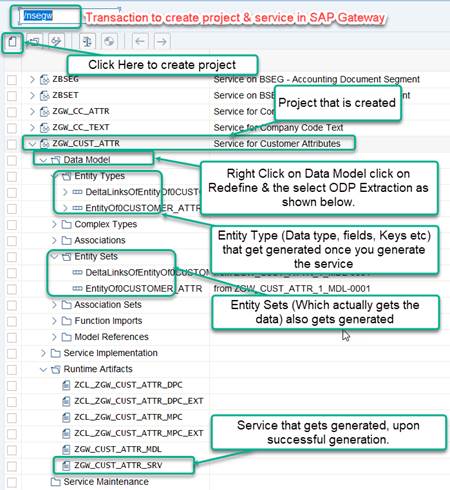
Once the SAP OData Service is generated, it should be registered. Without registration the service will not work.
Follow the steps below to register the SAP OData Service:
- Go to transaction /n/IWFND/MAINT_SERVICE. Click on Add service
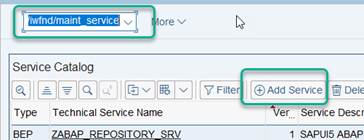
- In the next screen provide the System Alias & Service Name to fetch the service details.
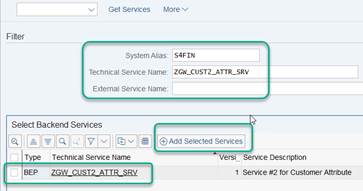
- Select the service & click on Add Selected Service this will register the SAP OData Service. A popup will appear upon successful registration of service.
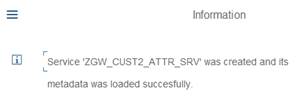
- Navigate back to the main screen & click on filter, provide the service name.
- Upon successful registration, the SAP OData Service will show up here. Click on the Service name and click on ‘SAP Gateway Client’ button to test the service.
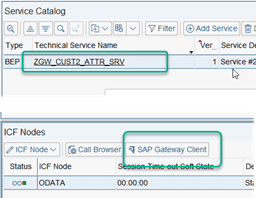
- In the new window, click on the ‘Execute’ tab to test the SAP OData Service & notice the HTTP response.
- A successful working service will show a status code as 200 as below.
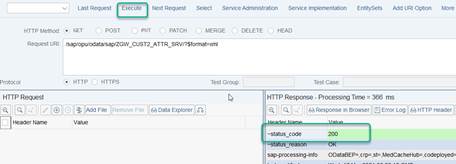
Once the SAP OData Service is ready & successfully tested, it is ready to be consumed for extracting data from SAP systems and to load it into any non-SAP target systems.
The SAP ETL tool that extracts SAP data at application level in real-time, with business logic intact
If you are searching for that perfect third-party SAP ETL tool that will make SAP integration easy, search no more. BryteFlow has developed an SAP ETL tool- the BryteFlow SAP Data Lake Builder. It extracts SAP data from SAP applications with business logic intact. SAP HANA to Snowflake (2 Easy Ways)
Automated SAP Data Extraction for SAP ETL
You save hours of effort (by not having to rebuild business logic on target) and can integrate SAP data easily with our SAP ETL Tool. It automates extraction of SAP data from SAP applications like SAP ECC, S4HANA, SAP BW, SAP HANA using the SAP Operational Data Provisioning (ODP) framework and SAP OData services, and replicates data with business logic intact to your SAP Data Lake or SAP Data Warehouse. You get a completely automated setup of data extraction and automated analysis of the SAP source application. Your data is ready-to-use on the target for various uses cases including Analytics and Machine Learning. RISE with SAP (Everything You Need to Know)
SAP ETL Tool: BryteFlow SAP Data Lake Builder
- The SAP ETL tool automates data extraction, using SAP OData services to extract the data, both initial and incremental or deltas. The tool can connect to SAP Data extractors or CDS views to get the data. How to Carry Out a Successful SAP Cloud Migration
- It can also do log based Changed Data Capture from the database using transaction logs if the underlying SAP database access is available
- Deltas are merged automatically with initial data to keep the SAP Data Lake or SAP Data Warehouse continually updated for real-time SAP ETL. Using SAP SLT Transformation Rule in SAP HANA
- No coding to be done for anything, including SAP data extraction, merging, masking, or type 2 history. No external integration with third party tools like Apache Hudi is required. SAP BODS, the SAP ETL Tool
- Data in your SAP Data Lake or SAP Data Warehouse is Analytics-ready. Best practices and high performance for SAP integration on Snowflake, SingleStore, Databricks, Redshift, S3, Azure Synapse, ADLS Gen2, Azure SQL DB, BigQuery, Kafka, Postgres and SQL Server

